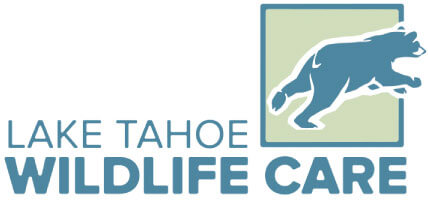At LTWC, the well-being of every animal in our care is paramount. It is with profound sadness that we acknowledge a tragic incident earlier this year involving an eaglet in our care, who became the victim of a predation breach by a pack of coyotes.
This eaglet, part of a collaborative effort with wildlife experts, was being cared for with the intention of ensuring his survival and eventual release. The decision to delay her release was based on expert recommendations, allowing him to develop vital hunting skills during the kokanee salmon run in Lake Tahoe. Despite careful planning and adhering to industry standards, the predation occurred, underscoring the unpredictable challenges of wildlife rehabilitation.
It is important to note that prior to this incident, there were no reports from volunteers, staff, or others indicating potential issues or deficiencies in the facility’s infrastructure. Neither the executive director nor the board of directors were informed of any risks that might have contributed to such an event.
The eaglet’s enclosure was carefully designed, featuring high perches and nest boxes to support her development. However, as with all wild animals, wildlife behavior can be incredibly unpredictable. The eaglet, like many birds of prey, exhibited natural territorial behaviors vital for survival. In her enclosure, she demonstrated strong flying abilities but instinctively defended her space and stood her ground, as any wild animal would when feeling threatened. While these instincts are critical for survival in their natural habitat, they can present unique challenges when caring for them in a controlled environment. Wildlife behavior is complex and can be difficult to manage, even in the most secure enclosures.
At the time of the breach, our perimeter fence had multiple layers of protection, including three rows of hot wire, barbed wire, and rebar buried three feet deep. Despite these safeguards, the coyotes dug into the earth, exposed the rebar, and squeezed through a narrow gap of just 5.25 inches between the rebar, breaching the perimeter.
LTWC has long been recognized for addressing the unique challenges of urbanized wildlife in the Tahoe Basin, where human-wildlife interactions are frequent and unpredictable. Wildlife, by their very nature, are determined and will often find ways to breach barriers when least expected. Despite our best efforts, the unpredictable nature of wildlife behavior remains one of the inherent challenges of caring for wild animals. No amount of security can fully account for the drive of wildlife to explore and protect new territory when they feel the need.
We deeply regret the outcome of this incident and want to assure the public that we have taken swift action to improve our facility’s security. Since the breach, we’ve implemented significant upgrades to our infrastructure, exceeding the minimum safety standards. Our updated fencing now includes rebar extending 3 feet below ground, spaced every 2 inches, with a reinforced dig barrier that extends 8-10 inches above ground and extends 3-4 feet from the perimeter. This is anchored with U-shaped rebar. Additionally, sheet metal has been installed on any trees within 5 feet of the fence to prevent climbing attempts. We’ve also reassessed all personnel entry points, ensuring they are level by raising asphalt or adding cement where necessary. These improvements are designed to provide an even higher level of security for the animals in our care.
Wildlife rehabilitation is a complex and challenging endeavor, and we are constantly learning and evolving our practices. We want to emphasize that this was an unforeseen event, despite our best efforts to prevent it. We are committed to continually improving our protocols, infrastructure, and safety measures to ensure the well-being of the animals entrusted to us.

